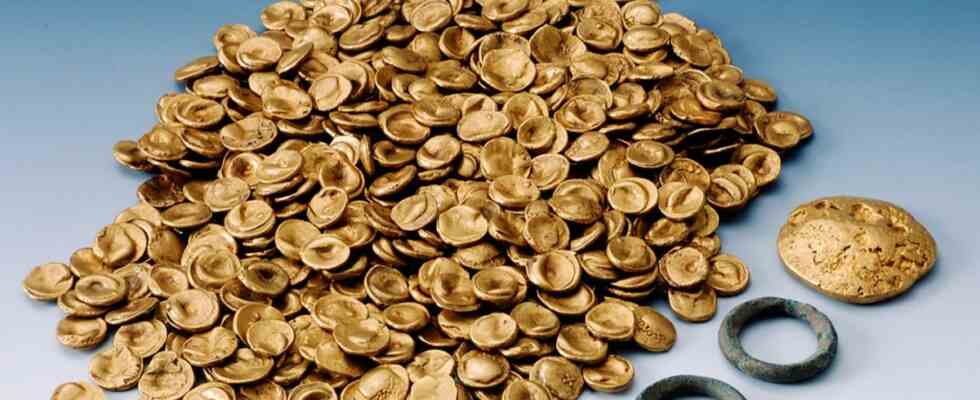Unfortunately not, says the spokesman for the State Criminal Police Office, Fabian Puchelt, unfortunately there is nothing new. The investigations are also ongoing at Christmas time, of course, “but we don’t really have a hot lead”. The assessment of the investigating senior public prosecutor at the time thus proves to be somewhat premature. Nicolas Kaczynski said shortly after the spectacular burglary in November that he was optimistic that he would soon catch the thieves of the Manching gold treasure. “I’m optimistic.”
Unknown thieves stole 483 gold coins from the Celtic and Roman Museum in Manching near Ingolstadt, in an action that can without exaggeration be described as fit for Hollywood. That was on the night of November 22nd, the burglary lasted only nine minutes. The perpetrators levered open a door, smashed the three centimeter thick armored glass pane and pocketed the pot of gold. And all without an alarm.
It was paralyzed because the burglars had previously cut fiber optic cables in a Telekom distribution center. Around Manching, the telephone and internet were down for hours, people were already surprised, the connection only became clear hours later. When the police noticed the failure during the night, the officials thought of alarm systems, but more like those in banks than those in museums. Because there is no security service there, the burglary was not noticed until the next day.
Doubts about the security concept of the museum soon arose, and then it turned out that there was nothing on the surveillance cameras. No picture of the burglars, no evidence of the break-in. The camera technology was outdated, a special company took on the recordings. Still: nothing. The museum rejected criticism of possibly inadequate security measures.
The treasure of gold is Manching’s pride and joy, only discovered in 1999 by an excavation team. It is said to be the largest Celtic gold find of the 20th century, according to the museum, which was built especially for it and for the Roman ships. The shock in the place was all the greater. “This is a complete disaster for our market,” Mayor Herbert Nerb said. “This is our darling!” The pure material value is estimated at around 250,000 euros, the historical and ideal value is much higher.
Fabian Puchelt would have liked to have found him again long ago, but he can’t help with a Christmas miracle. So the investigative work of the Soko “Oppidum” goes on. “All possible traces” are still being secured, he says, from “traces of moulding” on the broken door to classic fingerprints, and witnesses are being questioned. A reward of 20,000 euros has now been offered for information that will help to catch the perpetrators. And the museum is at least partially open again.

